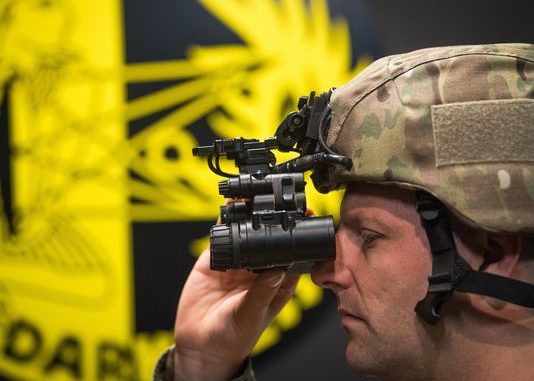
While the United States was deeply committed to wars in Afghanistan and Iraq for the past 17 years, China, Russia and other nations took careful note of American military capabilities.
“Our adversaries have been studying our strengths and our vulnerabilities and are developing capabilities to exploit those vulnerabilities,” Gen. Mark Milley, the Army’s chief of staff, warned in a speech last year. “They’ve steadily eroded our competitive advantage and are rapidly closing the capability gap that we have long enjoyed.”
With U.S. involvement in Iraq and Afghanistan winding down, the Army has embarked on its largest modernization programs since the Vietnam War nearly five decades ago to overhaul its weapons, training and tactics.
The post-Vietnam revamping transformed a large draft Army with discipline and other problems into a smaller all-volunteer fighting force equipped with modern weapons and better trained troops.
Widget not in any sidebars
The problems are not as desperate now, but officials are worried about the progress that Russia and China have made. Technological breakthroughs are cheaper and happen faster than decades ago when America could count on its advantages in industry and technology to power the military.
“We still maintain overmatch, but they are closing the gap,” Army Undersecretary Ryan McCarthy said in a recent interview.
The Army is setting up a Futures Command headquarters to be based in a city with links to academia and industry. The Army wants a place that “will help us think differently and get more people from the country to help us solve problems,” McCarthy said.
The Army also plans to replace the current M4 service rifle and to extend infantry basic training to 22 weeks from 14, adding more marksmanship, physical fitness, land navigation and other war-fighting skills.
It is also revamping artillery, vehicles and other equipment, but some of the most dramatic breakthroughs are to make individual soldiers and squads deadlier. Commanders say that’s necessary because American ground forces can no longer fight as in the past, when they gathered overwhelming combat power before an invasion.
During the Persian Gulf War in 1990-91 and the 2003 invasion of Iraq, American forces assembled large numbers of troops before invading and overwhelming the enemy.
The U.S. military won’t get that opportunity next time. Russia and China have developed long-range weapons, such as artillery and rockets, to prevent the U.S. military from massing large combat formations.
The Army expects to fight in smaller sized units, so they need to be deadlier than in the past.
In World War II, less than 25% of infantrymen fired their weapons in battle, according to a famed study by military historian S.L.A. Marshall.
Now every bullet needs to count. “We’re saying what you shoot, you hit on the first time you shoot it,” said Army Brig. Gen. Christopher Donahue, commandant of the infantry school at Fort Benning, Ga. “There’s no military in the world that has ever done that.”
Widget not in any sidebars
One of the crown jewels of the modernization efforts are the new goggles that use thermal technology to see through smoke and darkness. They also utilize augmented reality to feed each soldier real-time information on a heads-up display.
The Army demonstrated the device in a special indoor range at Fort Belvoir outside Washington, D.C., where officials can obscure targets using a smoke machine or darken the range to simulate combat conditions.
Monitors show what the soldier sees through the goggles, Targets that can’t be be seen with the naked eye suddenly appear on the screen.
Unlike the current night-vision goggles, a monocle-like device that shows a fuzzy green picture at night, the new goggles are designed like binoculars and are wirelessly linked to the sight on a soldier’s weapon.
These googles identify heat sources through thermal technology, revealing the shapes of enemy fighters hiding in foliage or obscured by smoke. Current night-vision goggles operate by expanding ambient light from the stars or moon so soldiers can see shapes at night.
A soldier with the new googles can be hiding behind a concrete wall or barrier and still fire a rifle around a corner or above his or her head because of the wireless link on the sight of the weapon. A soldier can still see where the rifle is pointed, even if not looking down the barrel.
That ability will be especially useful in densely populated cities where officers expect to fight the next war. “We won’t be able to avoid the dense urban terrain or the megacities in the future,” said Maj. Gen. Maria Gervais, deputy commanding general of the Army’s combined arms center at Fort Leavenworth, Kan.
The device, which has an initial cost of about $23,000, is tied to a network through smartphones issued to soldiers that allow them to see enemy positions and other intelligence. The heads-up display also includes navigation information, such as compass headings and patrol routes.
“We’re seeing the time it takes to hit a target decrease both day and night significantly,” Donahue said. “Their lethality is through the roof.”


Be the first to comment